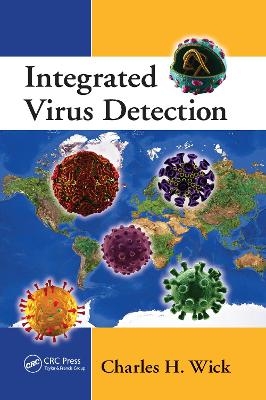
Integrated Virus Detection
CRC Press (Verlag)
978-0-367-65893-9 (ISBN)
Multiple viruses can be detected concurrently using the Integrated Virus Detection System (IVDS). Integrated Virus Detection describes this technology and provides many examples of applications including a chapter on viruses found in honeybees with descriptions of seasonal and yearly variation. This straightforward technology can be used to detect known, unknown, and unsequenced viruses collected from environmental and other complex biological sources.
This book summarizes more than ten US patents issued for the invention of the IVDS, which is the common name of the electrospray–differential mobility analyzer method. The IVDS is powering mankind’s ability to rapidly detect, measure, and monitor viruses as well as virus-like particles. Three facts make rapid detection possible: virus size, which ranges from 20 to 800 nm.; disparity in each virus species’ particle size thus allowing size data to be used for detection and preliminary identification; and the fact that virus particle density is distinct from other nanoparticles.
The IVDS can ascertain the absence of virion particles, thus presenting compelling evidence of a true negative, which is useful in verifying decontamination and other processes. In addition, large numbers of samples may be processed in an automated fashion, providing an excellent means to prescreen them for judicious targeting of subsequent tests such as PCR or the discriminating method for identifying microbes, which is mass spectrometry proteomics.*
The book is helpful to anyone interested in virus detection, especially in situations where many viral types may coexist.
*Identifying Microbes by Mass Spectrometry Proteomics (CRC Press 2013)
Charles H. Wick is a retired lieutenant colonel and senior scientist from the U.S. Army Edgewood Chemical Biological Center. He earned his PhD from the University of Washington. Dr. Wick is best known for work in forensic science done in concert with the Department of Defense. Dr. Wick’s research work has resulted in international recognition as an authority on individual performance for operations conducted on a nuclear, biological, and chemical battlefield. He has made lasting and important contributions to forensic science and antiterrorism and holds several U.S. patents in the area of microbe detection and classification. He has written more than 45 civilian and military publications and has received various awards and citations.
Detection of Whole Viruses. Instrumentation. Proof Concept Using MS2. Concentration of Viruses. Cause and Effect Curves. Isolating Single Viruses from Multivirus Mixtures. Analyzing Various Viruses. Detection of Other Nanoparticles. Direct Counting of Pili. Detecting Viruses in Honeybees. Pulsed Lamp Decontamination. Current and Future Trends.
| Erscheinungsdatum | 06.04.2021 |
|---|---|
| Verlagsort | London |
| Sprache | englisch |
| Maße | 156 x 234 mm |
| Gewicht | 471 g |
| Themenwelt | Medizin / Pharmazie ► Allgemeines / Lexika |
| Studium ► Querschnittsbereiche ► Infektiologie / Immunologie | |
| Naturwissenschaften ► Biologie ► Genetik / Molekularbiologie | |
| ISBN-10 | 0-367-65893-3 / 0367658933 |
| ISBN-13 | 978-0-367-65893-9 / 9780367658939 |
| Zustand | Neuware |
| Haben Sie eine Frage zum Produkt? |
aus dem Bereich


